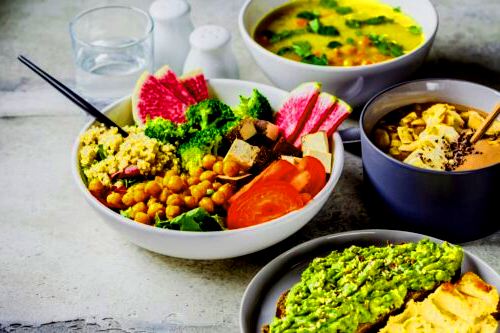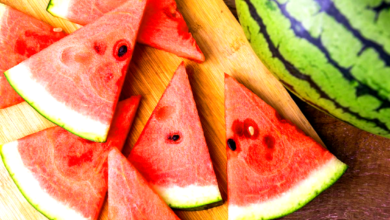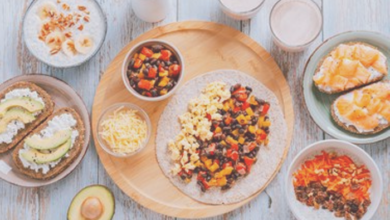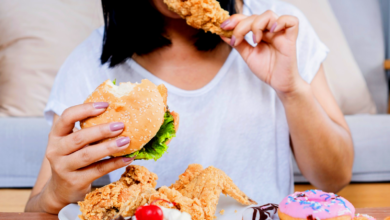Comprehensive Pre-Diabetic Diet Plan for Managing Blood Sugar

Pre-diabetes is a condition where blood sugar levels are higher than normal but not high enough to be diagnosed as diabetes. It’s a critical stage where intervention can prevent the progression to type 2 diabetes.
Managing blood sugar levels through diet is essential in this stage, and this comprehensive guide will help you navigate the dietary changes necessary to maintain healthy blood sugar levels.
Pre-Diabetic Diet Plan for Managing Blood Sugar
Normal vs. Pre-Diabetic Blood Sugar Levels
Understanding the difference between normal and pre-diabetic blood sugar levels is the first step. Normal fasting blood sugar levels are typically below 100 mg/dL, while pre-diabetic levels range from 100 to 125 mg/dL. Post-meal blood sugar levels for pre-diabetics range from 140 to 199 mg/dL.
How Blood Sugar Levels Affect Health
Elevated blood sugar levels can damage vital organs and systems, including the heart, kidneys, and nervous system. Managing these levels is crucial to prevent complications and maintain overall health.
The Role of Diet in Managing Blood Sugar
Importance of Diet in Blood Sugar Management
Diet plays a pivotal role in managing blood sugar levels. Consuming the right foods can help stabilize blood sugar levels and improve insulin sensitivity.
How Diet Impacts Blood Sugar Levels
Different foods impact blood sugar levels in various ways. Carbohydrates, for example, have a more immediate effect on blood sugar compared to proteins and fats. Understanding these impacts helps in making informed dietary choices.
Read More : Proven Diet Plans for PCOS Weight Loss Success
Key Components of a Pre-Diabetic Diet
Carbohydrates: Quality Over Quantity
Not all carbs are created equal. Focus on complex carbohydrates like whole grains, which are digested more slowly and help maintain stable blood sugar levels.
Proteins: Lean and Plant-Based Options
Lean proteins, such as chicken, fish, and plant-based proteins like beans and lentils, are excellent choices. They help in muscle repair and keep you feeling full without spiking blood sugar levels.
Fats: Healthy vs. Unhealthy Fats
Incorporate healthy fats from sources like avocados, nuts, and olive oil. Avoid trans fats and limit saturated fats, which can negatively impact heart health.
Fiber: The Unsung Hero
Fiber slows down the digestion and absorption of sugar, helping to regulate blood sugar levels. Foods high in fiber include vegetables, fruits, whole grains, and legumes.
Hydration: Importance of Water and Other Beverages
Staying hydrated is crucial for overall health. Water is the best choice, but other options like herbal teas can also be beneficial. Avoid sugary drinks which can cause blood sugar spikes.
Foods to Include in a Pre-Diabetic Diet
Whole Grains
Whole grains like oats, brown rice, and quinoa are rich in fiber and nutrients. They provide a steady release of energy, helping to maintain stable blood sugar levels.
Non-Starchy Vegetables
Vegetables such as spinach, broccoli, and bell peppers are low in calories and carbohydrates, making them ideal for a pre-diabetic diet.
Fruits in Moderation
While fruits contain natural sugars, they are also packed with vitamins, minerals, and fiber. Opt for fruits with a low glycemic index like berries and apples.
Lean Proteins
Incorporate lean proteins from sources like chicken, turkey, tofu, and fish. These proteins are low in saturated fats and help in maintaining muscle mass.
Healthy Fats
Include healthy fats from sources like avocados, nuts, seeds, and olive oil. These fats can help improve insulin sensitivity and provide essential fatty acids.
Foods to Avoid or Limit
Sugary Foods and Beverages
Sugary foods and drinks can cause rapid spikes in blood sugar levels. Limit or avoid items like candies, sodas, and pastries.
Refined Carbs
Refined carbs such as white bread, pasta, and rice are quickly broken down into sugar, causing blood sugar spikes. Opt for whole grain alternatives instead.
Trans Fats and Saturated Fats
Trans fats, found in many processed foods, and saturated fats, found in fatty cuts of meat and full-fat dairy products, can increase the risk of heart disease. Limit these fats in your diet.
Processed Foods
Processed foods often contain hidden sugars, unhealthy fats, and excessive salt. Stick to whole, unprocessed foods to better manage blood sugar levels.
Meal Planning and Preparation
Importance of Meal Planning
Meal planning helps you make healthier choices and ensures you have balanced meals throughout the day. It also reduces the temptation to reach for unhealthy snacks.
Tips for Effective Meal Planning
Plan your meals around whole foods, include a balance of macronutrients, and prepare meals in advance to save time. Keep healthy snacks handy to avoid blood sugar dips.
Sample Meal Plan for a Week
Monday:
- Breakfast: Greek yogurt with berries and a sprinkle of chia seeds.
- Lunch: Quinoa salad with mixed vegetables and grilled chicken.
- Dinner: Baked salmon with steamed broccoli and brown rice.
- Snacks: Apple slices with almond butter.
Tuesday:
- Breakfast: Oatmeal topped with nuts and a banana.
- Lunch: Lentil soup with a side of mixed greens.
- Dinner: Stir-fried tofu with vegetables and quinoa.
- Snacks: Carrot sticks with hummus.
Wednesday:
- Breakfast: Smoothie with spinach, avocado, and protein powder.
- Lunch: Turkey and avocado wrap with whole grain tortilla.
- Dinner: Grilled chicken with roasted sweet potatoes and green beans.
- Snacks: Handful of mixed nuts.
Thursday:
- Breakfast: Scrambled eggs with spinach and whole grain toast.
- Lunch: Chickpea salad with cucumbers, tomatoes, and olive oil.
- Dinner: Shrimp stir-fry with vegetables and brown rice.
- Snacks: Greek yogurt with a drizzle of honey.
Friday:
- Breakfast: Whole grain cereal with low-fat milk and berries.
- Lunch: Tuna salad on a bed of mixed greens.
- Dinner: Baked cod with quinoa and asparagus.
- Snacks: Celery sticks with peanut butter.
Saturday:
- Breakfast: Smoothie bowl with fruits, nuts, and seeds.
- Lunch: Grilled chicken Caesar salad.
- Dinner: Turkey meatballs with whole grain pasta and marinara sauce.
- Snacks: Cottage cheese with pineapple.
Sunday:
- Breakfast: Whole grain pancakes with fresh fruit.
- Lunch: Veggie wrap with hummus and mixed greens.
- Dinner: Grilled steak with sweet potato fries and a side salad.
- Snacks: Edamame.
Eating Out and Social Situations
Making Healthy Choices When Eating Out
Look for menu items that are grilled, baked, or steamed. Avoid fried foods and ask for dressings and sauces on the side. Opt for whole grain options when available.
Managing Blood Sugar at Social Events
Eat a small, balanced meal before heading to social events to avoid overeating. Choose healthier options available and keep portion sizes in check.
Monitoring and Adjusting Your Diet
Keeping Track of Blood Sugar Levels
Regularly monitor your blood sugar levels to understand how different foods affect you. Keeping a food diary can help identify patterns and make necessary adjustments.
Adjusting Diet Based on Blood Sugar Readings
If your blood sugar readings are consistently high, consider reducing carbohydrate intake and increasing fiber and protein. Consult with a healthcare provider for personalized advice.
Exercise and Physical Activity
Importance of Exercise in Blood Sugar Management
Exercise helps improve insulin sensitivity and lowers blood sugar levels. It also contributes to overall well-being and weight management.
Types of Exercises Beneficial for Pre-Diabetics
Incorporate a mix of aerobic exercises like walking, cycling, and swimming with strength training exercises like lifting weights or using resistance bands.
Lifestyle Changes for Better Blood Sugar Management
Stress Management
Chronic stress can negatively impact blood sugar levels. Practice stress-reducing activities like yoga, meditation, or deep breathing exercises.
Importance of Sleep
Quality sleep is essential for blood sugar regulation. Aim for 7-9 hours of sleep per night and maintain a consistent sleep schedule.
Common Myths About Pre-Diabetic Diets
Debunking Diet Myths
There are many myths about pre-diabetic diets, such as the need to avoid all carbs or that fruit is harmful. It’s important to differentiate between facts and misconceptions.
Facts vs. Fiction
Understanding the science behind nutrition helps in making informed decisions. Seek information from reliable sources and consult with healthcare professionals.
Read More : Effective Diet Strategies for Hormonal Imbalance
Conclusion
Managing blood sugar levels through a balanced diet is crucial for individuals with pre-diabetes. By incorporating whole foods, staying hydrated, planning meals, and making informed choices, you can effectively manage your blood sugar levels and reduce the risk of progressing to type 2 diabetes.
FAQs
- Can I still eat fruit if I have pre-diabetes?
- Yes, fruits can be included in a pre-diabetic diet. Opt for low glycemic index fruits like berries and apples, and consume them in moderation.
- Are artificial sweeteners safe for pre-diabetics?
- Artificial sweeteners can be an alternative to sugar, but it’s best to use them sparingly. Some studies suggest they may affect insulin sensitivity.
- How often should I check my blood sugar levels?
- It’s recommended to check your blood sugar levels as advised by your healthcare provider. Regular monitoring helps in managing and adjusting your diet effectively.
- Can pre-diabetes be reversed with diet alone?
- Diet plays a significant role, but a combination of diet, exercise, and lifestyle changes offers the best chance of reversing pre-diabetes.
- What are some good snacks for pre-diabetics?
- Healthy snacks include nuts, seeds, vegetables with hummus, Greek yogurt, and whole fruits in moderation.











